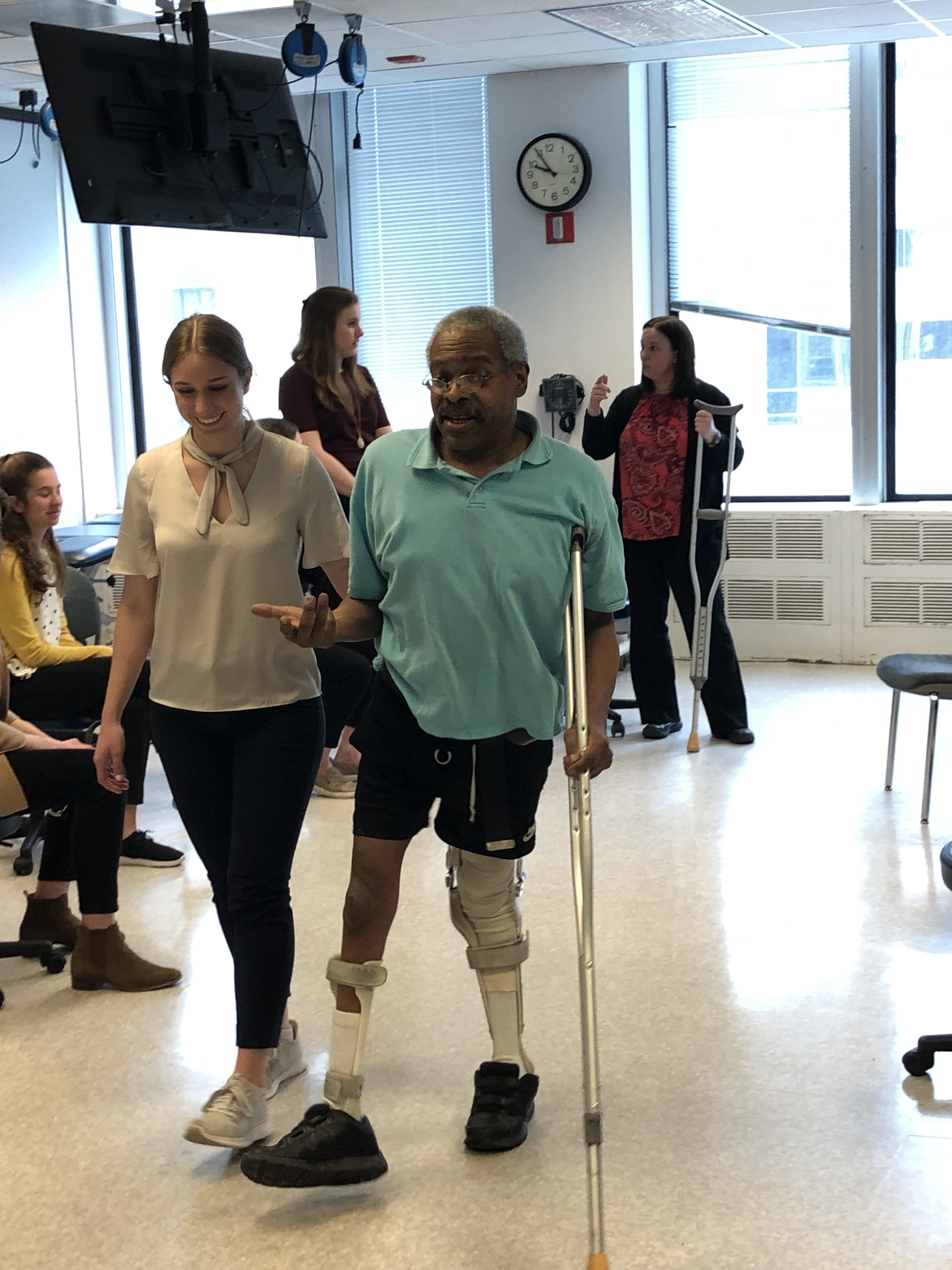 A group of nearly 100 second-year Doctor of Physical Therapy students recently participated in an annual interprofessional orthotics learning experience with members of the Northwestern University Prosthetics-Orthotics Center (NUPOC) and Department of Physical Therapy and Human Movement Sciences faculty.
A group of nearly 100 second-year Doctor of Physical Therapy students recently participated in an annual interprofessional orthotics learning experience with members of the Northwestern University Prosthetics-Orthotics Center (NUPOC) and Department of Physical Therapy and Human Movement Sciences faculty.
During the session, students also worked with community volunteers with neuromuscular conditions including stroke, cerebral palsy, and post-polio syndrome ranging in age from 7 to 70 years of age, all of whom use orthoses. Students conducted an initial patient intake and evaluated the volunteers’ mobility to develop a comprehensive lower limb orthotic treatment plan.
“This is an interactive session that mimics the collaboration between physical therapists, orthotists, and patients that happens in the clinic,” said faculty leader and course director Rachel Tappan, PT, DPT assistant professor of Physical Therapy and Human Movement Sciences. “The goal is to learn how to develop recommendations for orthotic prescription including understanding the complementary expertise that physical therapists and certified orthotists offer and learning what their respective roles are when caring for a patient.”
Working with community members is a critical component of the DPT education. Kathryn McLeland, a second-year student, stated, “The hands on experience and feedback from volunteers was a beneficial learning experience before going to my next clinical working with patients living with neurological dysfunction. Working with NUPOC faculty helped me see, in real time, the impact prostheses and orthoses have on function and movement.”
This course experience helps students learn to work effectively on healthcare teams. Chris Robinson, MS, MBA, CPO, adjunct assistant professor of Physical Medicine and Rehabilitation noted, “Interdisciplinary care models bring patients great value and the opportunity to bring the entire 2nd year physical therapy cohort into real-world scenarios is a tremendous learning opportunity. Just as a physician measures their outcomes on how a treatment affects their patients’ lives, rehabilitation professionals including physical therapists and orthotists strive to enable community participation and improve quality of life. A positive outcome isn’t measured in the number of physical therapy visits or the design of an orthosis, but a patient’s ability to achieve goals that are meaningful to them such as being able to work or attend a religious service.”
This experience had benefits for the volunteers, as well. One participant who has volunteered for over 20 years in various Feinberg departments noted these community-engaged learning experience are important because they provide new knowledge about his condition and give community members a sense of fulfillment. “I’ve always liked to teach; one of my minors in college was education, so I’m an educational model, that’s the way I feel about it,” the volunteer said.
Robinson said, “It is an honor to serve on the faculty at an institution that recognizes training of healthcare professionals goes well beyond a textbook. Our community volunteers serve as an extension of the faculty and they provide meaningful learning opportunities well-beyond what can be taught in lecture or assigned reading.”






